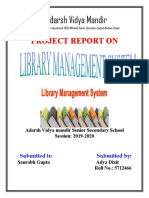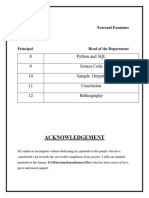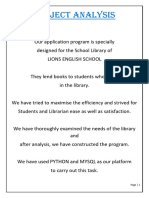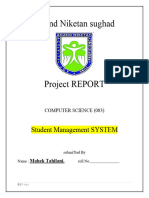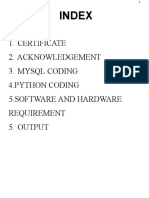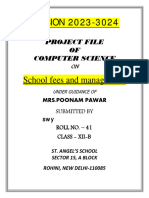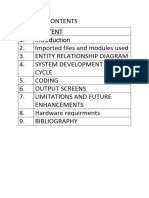0% found this document useful (0 votes)
47 views10 pagesCS Project
The document provides an overview of the Python programming language and its features. It then describes the hardware and software requirements for Python. It also includes a sample Python code for a basic library management system that demonstrates functions for adding books and students, issuing and returning books, and displaying records.
Uploaded by
sharveshaa.12123psgps2023Copyright
© © All Rights Reserved
We take content rights seriously. If you suspect this is your content, claim it here.
Available Formats
Download as DOCX, PDF, TXT or read online on Scribd
0% found this document useful (0 votes)
47 views10 pagesCS Project
The document provides an overview of the Python programming language and its features. It then describes the hardware and software requirements for Python. It also includes a sample Python code for a basic library management system that demonstrates functions for adding books and students, issuing and returning books, and displaying records.
Uploaded by
sharveshaa.12123psgps2023Copyright
© © All Rights Reserved
We take content rights seriously. If you suspect this is your content, claim it here.
Available Formats
Download as DOCX, PDF, TXT or read online on Scribd
/ 10















